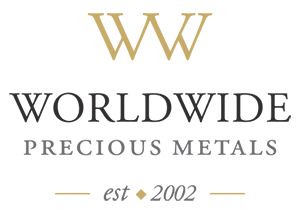Understanding What Moves Bullion in Vancouver Prices
If you’re thinking about investing in gold, one of the first things you’ll want to understand is what actually causes gold prices to rise and fall.
Unlike stocks, which are directly tied to company performance, the price of gold is influenced by a wide variety of global economic, political, and industrial factors. This guide breaks down the key forces that shape the gold market, so you can invest with confidence and clarity.
The US Dollar’s Role in Gold Pricing
Gold is priced in US dollars on global markets, which means its value is closely tied to the strength of the dollar. Generally, the relationship is inverse: when the dollar weakens, gold prices rise, and vice versa.
Why? Because a weaker dollar reduces purchasing power, especially for international buyers. When dollars lose value, it takes more of them to buy gold in Vancouver or anywhere else. This drives up demand, pushing the price higher.
A prime example occurred on December 27, 2023, when gold closed at approximately CA $2,743.05 per troy ounce in Vancouver, one of the highest prices of the year.
On that same day, the US Dollar Index hit one of its lowest levels for the year, and the euro rose to around US $1.11. This simultaneous dip in the dollar and rise in gold wasn’t a coincidence; it clearly demonstrates how tightly their values are intertwined.

Gold Production Costs
Gold isn’t an unlimited resource. Over the years, the “easy” gold has already been mined. What remains is harder to access, often requiring deeper digs, higher costs, and more advanced technology, all of which push up the cost of gold production.
When mining becomes more expensive and production rates decline, prices tend to rise. In fact, gold mine production dropped from 3,300 metric tons in 2018 and 2019 to around 3,000 metric tons in 2020 and 2021. Some experts believe that we could reach “peak gold” by 2050, where production can no longer meet demand. If that happens, prices are expected to skyrocket.
Demand for Gold
Like anything else, gold prices are driven by supply and demand. But demand for gold comes from multiple sectors, each playing a unique role in how the market behaves.
Jewelry
Nearly half of all gold demand comes from jewelry. Countries like India, China, and the U.S. lead the charge in gold jewelry consumption. However, since jewelry tends to be held for many years and isn’t frequently traded, its impact on short-term gold prices is more muted.
ETFs and Bullion in Vancouver Pricing
Exchange-traded funds (ETFs) have made it easier than ever to invest in gold. When demand for gold ETFs rises, so does the price of gold. These funds hold physical bullion or shares in gold-mining companies, making them a powerful market force. Unlike jewelry, ETFs are traded actively, meaning their influence on daily price movement is more direct.
Industrial Use
Although a smaller portion of the total demand, gold is critical in several industries, including electronics, medicine, and aerospace. As technology advances, the need for gold in high-tech applications continues to grow, subtly increasing long-term demand and price stability.
Central Bank Reserves
Central banks around the world hold large reserves of gold to protect their economies from currency risk and financial instability. When these institutions increase their gold holdings, it sends a clear message to the market: gold is valuable, and it’s time to buy gold Vancouver.
According to the World Gold Council, 2023 marked the second year in a row that central banks added over 1,000 tons of gold to their reserves. In fact, central bank gold buying has hit levels not seen since the 1970s. Their influence on the market is powerful, not just because of their direct purchases, but also because they shape investor sentiment.
Interest Rates and Gold
Gold doesn’t earn interest or dividends, so its price tends to move inversely with interest rates. When interest rates rise, bonds and savings accounts become more attractive, potentially pulling investors away from gold. When rates fall, gold becomes more appealing as a store of value.
However, this relationship isn’t always straightforward. For example, despite high interest rates in 2023, gold still reached record highs. That’s because economic uncertainty and inflation fears kept investor interest strong. Ultimately, interest rates influence gold prices the most when combined with other factors like inflation, employment data, and investor confidence.
Geopolitical Tensions
Gold has long been considered a “safe haven” during times of crisis. When wars, political instability, or economic uncertainty hit the headlines, gold prices often rise as investors look for security.
On October 26, 2023, amid rising tensions from the Israel–Hamas conflict, gold in Vancouver closed at approximately CA $2,744.24 per troy ounce. Just 20 days later, by November 15, 2023, it was trading around CA $2,991, representing an increase of nearly 9 percent.
While not every international conflict drives gold, those that have implications for the U.S. economy, like this one, often produce a strong reaction in precious‑metals markets.

Who Sets the Price of Bullion in Vancouver?
Gold doesn’t trade on a single exchange. Its price is shaped globally but directly affects what you pay in Vancouver, once it’s converted to Canadian dollars and adjusted by local dealers.
Global Benchmark Pricing
The London Bullion Market Association (LBMA) sets the gold spot price in USD twice daily. This is the starting point for all gold pricing, including in Vancouver.
Futures Markets Influence
Gold futures on COMEX (New York) and TOCOM (Tokyo) affect market expectations and short-term price swings. Although these are “paper trades,” they influence the real-time prices used by Canadian dealers.
Currency Exchange Impact
Since gold is priced in USD, the CAD/USD exchange rate matters. When the Canadian dollar weakens, gold becomes more expensive in Vancouver, even if the global price stays flat.
Central Bank Activity
Purchases by central banks (like the U.S. Fed or Bank of Canada) influence long-term demand and market sentiment, which affects local pricing too.
Local Dealer Premiums
Vancouver dealers (like VBCE or Border Gold) add premiums on top of the spot price to cover import, storage, and operational costs. These vary based on product demand and supply.
How Volatile Is Gold?
Gold is known for its long-term stability, which makes it attractive to conservative investors. But that doesn’t mean it’s immune to short-term swings. Gold prices can fluctuate quickly in response to breaking news, changes in inflation expectations, or shifts in interest rate policy.
That said, gold tends to be less volatile than stocks or oil. Over time, it has proven to be a steady store of value, especially in times of economic stress. If you’re holding gold for the long haul, temporary price dips are usually followed by recoveries. That’s why gold is often recommended as part of a balanced investment portfolio.
Final Thoughts
Gold remains one of the most reliable and time-tested investments available. Its value is driven by complex, interwoven factors: economic conditions, political events, central bank actions, and market demand. But its role as a hedge against inflation, a diversifier of risk, and a preserver of wealth is undeniable.
If you’re ready to start your gold investment journey, consider physical gold bullion. It gives you tangible control over your asset and peace of mind in uncertain times.
